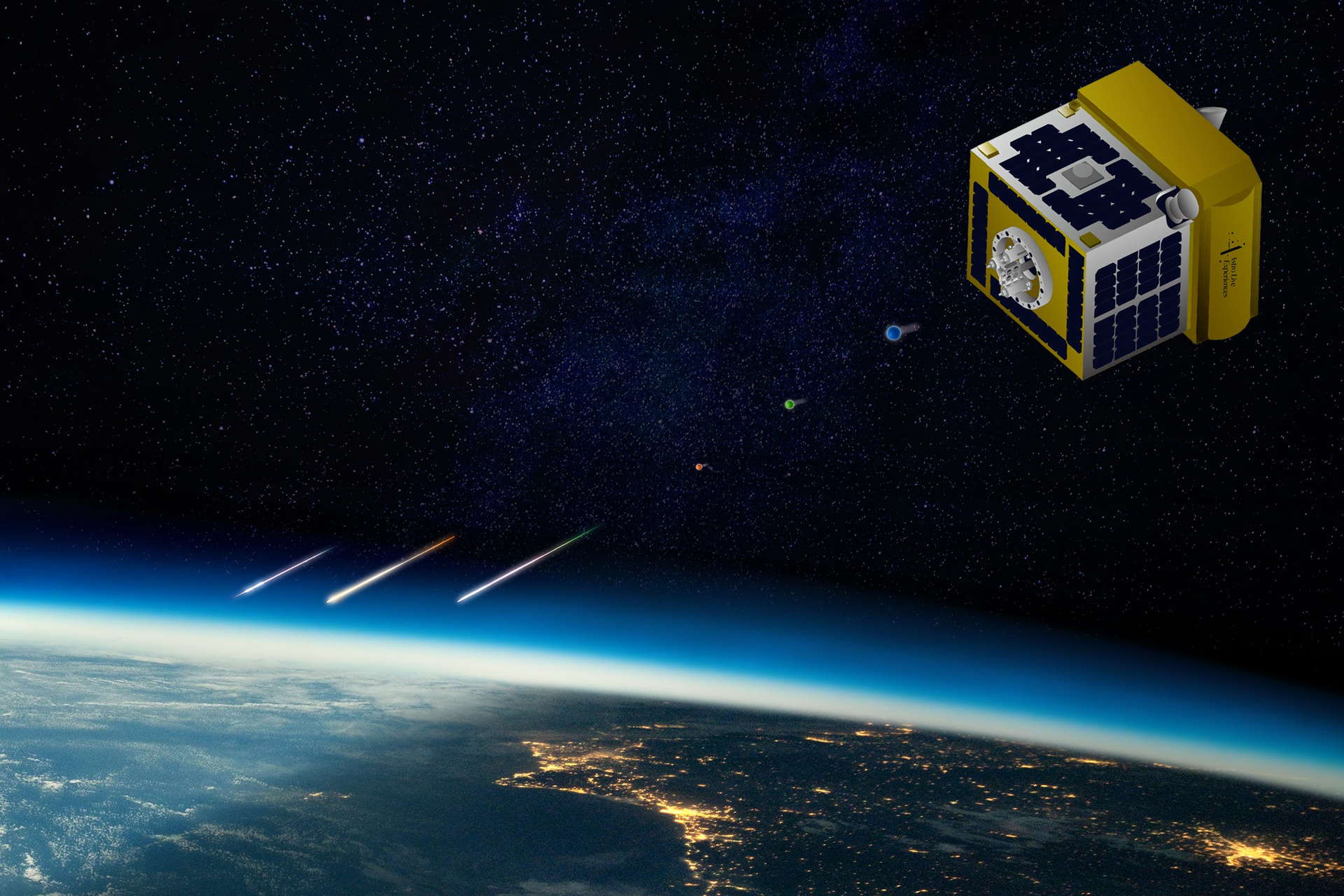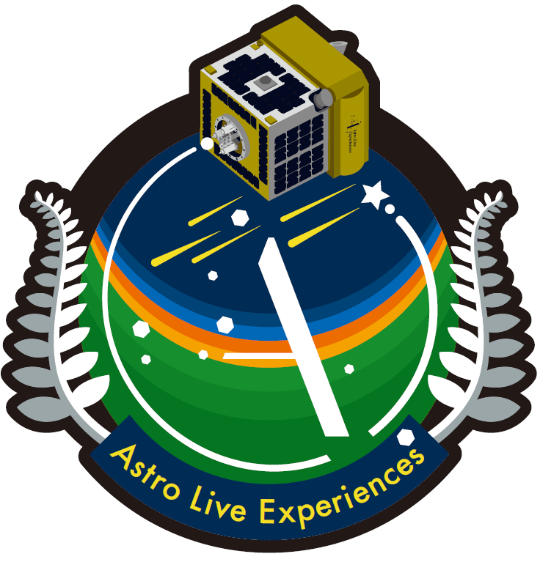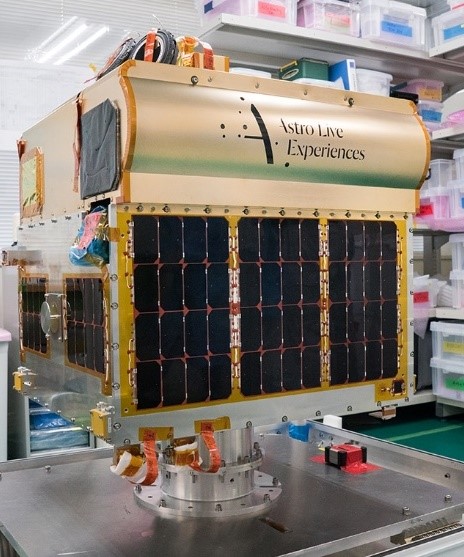Tokyo-based ALE Co., Ltd (ALE), led by its CEO Lena Okajima, with the mission to bring space closer to people, announces that the launch window of its second artificial satellite "ALE-2" (referred to as 2nd satellite below) will open on 25th November. The 2nd satellite will take on the challenge of materializing the man-made shooting star. The 2nd satellite, which was procured through a contract with Spaceflight, a mission management and launch services provider, will be deployed from Rocket Lab's Electron rocket set to launch from New Zealand's Mahia Peninsula. ALE is aiming to materialize and commercialize a man-made shooting star within 2020 using this 2nd satellite.
■Launch date
The 14 day launch window opens on 25th November.
■Plans after the launch
The 2nd satellite will be put into orbit after launch and establish communication with the ground. After that, we will conduct operational tests over several months to confirm the health of all components and systems. Finally, in 2020, we will demonstrate the world's first man-made shooting star. Details of the demonstration location are currently under consideration. We will announce this as soon as it is confirmed.
■Message from Okajima Lena (CEO)
I’m excited for the upcoming launch of our 2nd satellite "ALE-2". I’m delighted to have an earlier launch date than I expected. With this launch, we are a step closer to realize the man-made shooting star. Please look forward to the world's first demonstration we are aiming in 2020, which will be a major milestone for ALE. I'm pleased to have Rocket Lab for a partner, they have 100% mission success heritage for their customers. The launch of the 2nd satellite will be broadcast via a livestream by Rocket Lab. On the launch day, ALE members including CEO Okajima will be participating in the live viewing at the ALE office in Japan with everyone who has participated in the materialization of the artificial shooting star such as investors and R & D partners.
■ALE-2 mission logo
* In space-related companies, the mark “Mission Logo (Mission Patch)” may be created as a symbol of the unity of the team involved in the mission and for the public to become familiar with the mission.
“Looking up at the sky from the Earth to see the shooting star” is depicted in ALE’s Sky Canvas business. Green represents the Earth's ground, the colors from yellow, orange to blue represents how the sky changes from daytime to nighttime, and the dark blue is the universe. It is ALE’s wish to see that many people will be able to feel and enjoy the universe from the ground.The fern plant on the left and right represents New Zealand, the launch site of ALE-2. It is also called “Silver Fern” and is a national symbol of New Zealand. ” Taking this mission as an opportunity, it expresses the appearance of ALE that is greatly “advancing” and its “dynamism” toward the world's first man-made shooting star. The border is black to correspond with New Zealand's national color.
■ ALE 2nd satellite major improvements from ALE-1
◇The orbit of the satellite
The 1st satellite…Approximately 500 km in altitude
The 2nd satellite…Approximately 400 km in altitude
◇Orbit controlling device
The 1st satellite…DOMR:De-Orbit Mechanism *1
The 2nd satellite…Thruster
◇The number of colors of meteor sources shipped
The 1st satellite…4 colors (white, green, pink and orange)
The 2nd satellite…5 colors (blue in addition to the 4 colors to the above)
※75 kg, approximately 60 by 60 by 80 cm
The 2nd satellite is furnished with thrusters as an orbit controlling device which allows raising and lowering the position of the satellite by discharging gas from its nozzles. With the thrusters, the location, date and time which the man-made shooting stars are seen can be controlled as targeted.
The 2nd satellite embeds now 400 sources of man-made shooting stars in 5 colors. We developed blue meteor sources and complemented the palette of the 4 colors (white, green, pink and orange) already available in the 1st artificial satellite.
.* DOMR:De-Orbit Mechanism is a registered trademark of Nakashimada Engineering Works, Ltd (located at Yame city in Fukuoka prefecture).
【About ALE】
ALE’s mission is to “Make Space closer. For all of us. Together.” With our innovation and technology ALE strives to fulfill the endless curiosity of us humans, and to advance the development of science as well as grow space business that will enrich our daily lives.
Company Name: ALE Co., Ltd
Address : 2F, 2-11-8 Shiba-Daimon, Minato-ku, Tokyo 105-0012, Japan
CEO : Lena Okajima
Established :Sept. 1, 2011
Business Overview :Space Entertainment Business ”Sky Canvas”, data analysis of the upper atmosphere layers during reentry, development of microsatellite technologies
■Business Overview
◇ Sky Canvas
Sky Canvas is ALE’s aerospace entertainment project, which likens the sky to a vast canvas of opportunity. The company’s first project under this banner is achieving the world’s first man-made shooting star in 2020. It plans to follow that project with development of a variety of next-generation entertainment. The aerospace entertainment segment enables ALE to convey the appeal of space and science to a wider audience in order to draw attention to those sectors and draw more talent to the field.
* “Sky Canvas” is a registered trademark of ALE
◇ Data analysis of the upper atmosphere layers during reentry
Observation of man-made meteors will allow the retrieval of information from the data measured during reentry in the upper atmosphere, which is connected to climate change. This data directly relates to meteorological phenomena and also affects the various man-made objects traveling through the mesosphere, which would be of benefit to meteorology and the aerospace industry. ALE plans to collaborate with scientists and research institutions to increase the fidelity and accuracy of climate change and weather forecast models, as well as drive the design and optimization of safe spacecraft.
◇ Development of microsatellite technologies
ALE conducts development of micro-satellite and associated technologies. Current, ALE is working with the Japan Aerospace Exploration Agency (JAXA) to develop compact, lightweight electro-dynamic tethers (EDT). This EDT is expected as one of the effective measures to counter space debris proliferation, that Japan has set as a priority. By installing this EDT in advance on the satellites and rockets that will be launched in the future, it will be possible to lower their orbit after the mission and make them enter Earth's atmosphere. This type of post-mission disposal (PMD) technique will prevent the generation of new space debris.
* ALE press release on conductive tether (EDT)
http://star-ale.com/en/news/2019/02/28/000063.html
* JAXA press release regarding tie-up with ALE (J-SPARC) in EDT development
http://aerospacebiz.jaxa.jp/topics/news/20190228_ale/